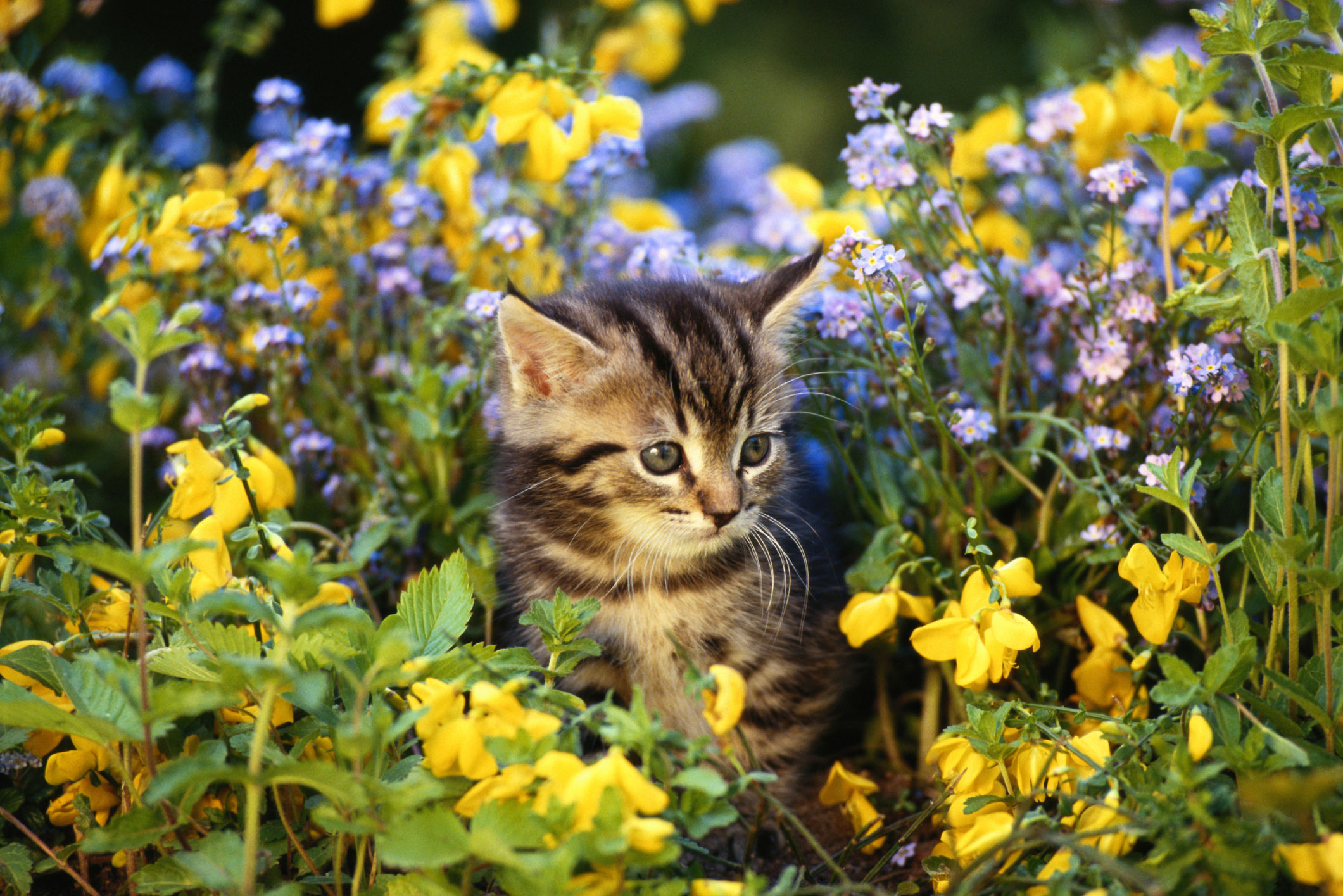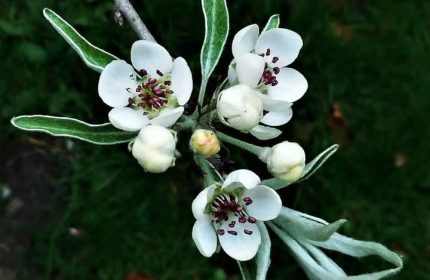Don’t go animal crackers
Cats, squirrels, rabbits and muntjacs are just a few of the uninvited visitors who can gorge on your plants and ruin your crops.
Hannah Stephenson looks at ways to keep them at bay ….
The other day, I wandered up the garden to find that some of my favourite emerging phlox had been razed to the ground, devoured by something which left just the stems at ground level.
Rabbits? Could be. But no, the next day the culprit returned for second helpings – a large black cat with a penchant for perennials, so now I’m keeping a powerful water pistol by my patio door to scare off any such intruders.
Indeed, one man’s pet is another man’s pest so it’s useful to know how to control them.
And it is often a matter of trial and error. What works for one gardener may be of no value to another. The only real deterrent may be a six-foot-high fence all the way around your garden, buried about 45cm (18in) into the soil so rabbits and other tunnelling creatures have less of a chance of penetrating your boundaries.
However, fences can be expensive and are often not easy to erect if you have mature shrubs and trees growing on your boundary line, so here’s a few solutions you might try to deter some of the nuisance animals into your garden.
CATS: There are a number of battery-operated deterrents on the market which, when switched on, pick up movement with an infra-red detector and then emit ultrasonic, high-pitched frequencies that reputedly scare off the culprits. They are not audible to humans and the usual range is about 10m (33ft) over an arc of 70 degrees.
Another solution is to put down citrus peelings or lemon scent where the cats are causing the damage, or prickly prunings around their favourite plants.
They are less likely to use your garden as a litter tray if they have no access to bare soil – especially dry, loose soil. If you have a gravelled area, try replacing it with larger stone chippings or pebbles.
Unwanted CDs can be threaded on twine with knots in between to keep them apart. String these across flower beds or hang from trees, and the light reflections will deter cats.
Try growing the annual Coleus Canina, labelled as the ‘Scaredy Cat Plant’, a pretty blue-flowered annual which smells foul to cats. It’s widely available online.
RABBITS: These fast-breeding mammals can cause massive damage to vegetables and flowers and are a particular problem in rural areas. The only real defence is a rabbit-proof fence buried around 45cm (18in) into the soil and about 1m (3ft) high. You could also try growing plants which rabbits don’t like, such as very aromatic plants, plants that ooze caustic milky sap, prickly plants, plants with spines or plants with tough leathery leaves. These include astilbe, berberis, agapanthus, nicotiana, hydrangea, geranium, euphorbia, hypericum, helenium, rudbeckia and phormium, but there are many more. Be warned, though, if they are really hungry, rabbits will eat anything.
SQUIRRELS: The scourge of bird-lovers nationwide, squirrels will steal bird food from any receptacle it can get to, but there are now a lot of squirrel-proof feeders on the market to deter them. They can also damage plants, as they eat bulbs, shoot tips and flower buds, as well as stripping the bark from trees. The only really effective protection is to secure net-covered cages for groups of plants and individual tree guards to stop them stripping the bark.
FOXES: They can dig up clumps of your lawn, flower beds and vegetable plots, but alas there’s not much you can do about foxes. Avoid using fertilisers such as blood, fish and bone, which will attract them to the smell. Go to your local zoo and speak to the keepers about getting some lion urine, which apparently foxes hate because of the smell. Sprinkle it over the entrance to and exit from their run and you may deter them. Aside from that the only way forward is an electric fence.
MUNTJAC: These nuisance deer, natives of southeast Asia, strip rose bushes of buds, chew their way through shrubs and perennials and are territorial, so tend to return. Aside from putting a 6ft fence around your garden, you could try growing plants they’re not so keen on, including camellia, cistus, hellebore, hosta, hydrangea, lavender, poppies and sedum. Be warned, they do like geraniums, sweet Williams, clematis and roses, but if they’re starving they’ll eat anything.
If you want to preserve the balance of nature, you could grow alternative food for the deer, allowing an area at the end of your garden to be devoted to brambles, rowan, dandelion, campion and yarrow. Hopefully the deer will prefer these to your favourite roses.
BEST OF THE BUNCH – Astrantia
These pretty, delicate-looking perennials which come in shades of white, pink and deep red are wonderful for the middle of a border, growing the around 60cm (2ft) and spreading to make excellent ground cover. They spread rapidly, so you can increase your stock by digging up clumps and dividing them every couple of years. The small pin-cushion flowers appear above the foliage from June to August and they will grow in any soil in sun or partial shade. Thanks to their subtle colours, astrantias fit into most planting schemes. Good varieties include A. major ‘Hadspen Blood’, which produces deep red flowers above elegant green foliage, and A. major involucrata ‘Shaggy’, which has white flowers with a collar of extra long petals.
GOOD ENOUGH TO EAT – Chives (Allium schoenoprasum)
These members of the onion family look great in the vegetable patch, or at the front of a flower border, with their pretty purple lollipop flowers. Even if you don’t like the taste of chives you can appreciate them as an ornamental. The flowers make a colourful addition to salads, while the onion-flavoured stems make a great addition snipped into sour cream for a delicious dip or jacket potato filling, or simply added to a salad instead of salad onions. These perennials are generally trouble-free, coming back year after year with no fuss. Plant pot-grown plants out in late spring or summer, water them in and keep them weeded and watered in dry spells. Remove faded flower heads and stalk to keep plants looking tidy through the summer. The most popular variety is the purple Allium schoenoprasum but you can also obtain rarer white chives (A. schoenoprasum ‘White Form’) from specialist herb farms.
THREE WAYS TO… Perk up a shady patio
1. Consider filling a container with shade-tolerant plants including white busy Lizzies, purple heliotropes, nemesia and evergreen lamium.
2. Brighten up a shady wall with a climbing clematis, many of which are shade tolerant. Try large-flowered hybrids in dappled shade such as C. ‘Hagly Hybrid’, whose pretty pink flowers stay true to their colour until you put them in the sun, or C. alpina, the alpine clematis, with its dainty blue, bell-like flowers.
3. Make the most of architectural specimens which like shade, including hostas and ferns, positioning pots of them around a focal point such as a statue.
WHAT TO DO THIS WEEK
:: Pinch out side shoots of sweet peas being grown as cordons
:: Pick off the dead flowerheads of rhododendrons and azaleas
:: Recycle grass cuttings, composting them or using them as a mulch around trees and bushes
:: Plant out dahlias and chrysanthemums raised from cuttings, staking them to support the flower stems as they grow
:: Feed flowering plants and shrubs with a general fertiliser, hoeing it into the soil surface and water in if the weather remains dry
:: Sow a few seeds of salad crops like lettuce and radish every fortnight during summer
:: Plant out ridge cucumbers in cold frames
:: Pinch out the soft tips of broad bean plants to reduce the risk of blackfly
:: Continue to plant out marrows, courgettes and squashes outside
:: Lift and divide congested clumps of flag iris after flowering
:: Raise new plants of azaleas, magnolias and other shrubs by layering low-growing shoots of young growth to soil level. Keep the soil around shoots layered early in the year constantly moist
:: Scoop out duckweed from your pond using a small fishing net
:: Continue to feed greenhouse plants in pots and growing bags at least once a week
Latest posts by Sally - Silversurfer's Editor (see all)
- Graham Norton’s funniest interviews - April 2, 2025
- How to help hay fever sufferers make Springtimemore comfortable - April 1, 2025
- Win a cruise of your choice with Fred. Olsen Cruise Lines - April 1, 2025
- Win a 2025/26 Ashes Experience for Two! - April 1, 2025
- Win ONE of THREE pairs of tickets for BBC Gardeners’ World Live at the NEC Birmingham - April 1, 2025




















